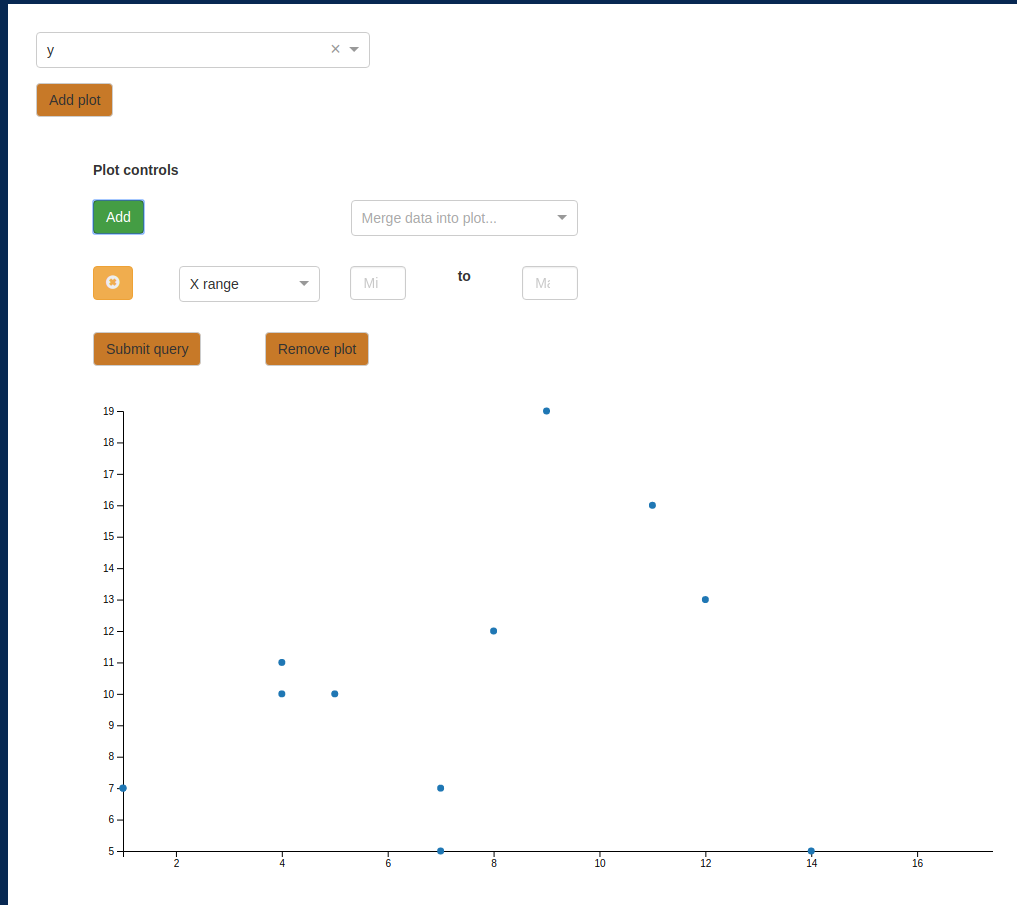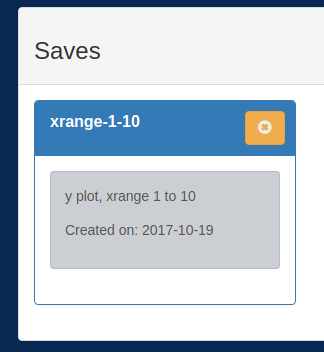Wiki
Clone wikisabroso / Usage
Basic usage of the sabroso framework
This section covers the basic functionality that the framework provides using a walk through of the sabroso demo. This tutorial assumes that you have installed the system as covered in the installation procedure. It also assumes, like the installation instructions, that you are running this on a Linux-like system.
Step 1: Start up the system
Confirm that installation instructions provided in this wiki have been followed.
Step 2: Log-in and create a project

Enter credentials at the log-in splash.

Create a project.
Projects are collections of analyses and data. Add a project by clicking the plus sign and adding a new "Demo project".

Projects can be navigated to by selecting the now created box containing created project information on the project page.
Step 3: Upload data into the project

Buckets are combinations of data that are relevant to a project. Each data set in a bucket must have the same columns. Buckets can be created by adding relevant information and selecting the "Create Bucket" button.

Once a bucket has been created, it can be associated with a bucket via the "Use Selected" button. Projects may have any number of buckets associated with them as long as the buckets maintain the same data type.

Once a bucket has been created, data can be associated with that bucket to be added into a project. This is done via selecting the pertinent file and uploading via the "Upload" field.
In order for a project to be functional, data must be added. In this case, we have provided a test set of data that is of "test_type". The data can be found at <repo>/python/examples/d3_scatter/example_data.csv.
When data is added to a project, it is added as a specific type. Analyses require data of specific types to be associated with a project to be accessible.
Step 4: Create analysis

With the data added, you should now be able to add a new analysis that requires "test_data" to be associated with a project. The analysis type is called "test_analysis_type". An analysis type is a description of a visualization and the data that the visualization requires. To create custom visualizations, see the section of the wiki on customizing the application.

Once the analysis has been created, you can click on the tile to see the data associated with the project analyzed and visualized with the analysis.


Plots can be created and added to the analysis. Once the plot is added to the analysis, certain functions can be added and run via the plot control functionality.
There are two types of controls available on visualizations. The first type requires a round-trip to the server by changing the way the data are analyzed. These are under the "Data controls" section and are processed after pressing the "Submit" button. The second type of controls change the way the plot looks and these are under "Plot controls" and require no round trip to the server.
Step 5: Save analysis


Once you make changes to a visualization, you can save a particular view of the data and come back to it later. Once you make a save, clicking on the save will return the state of the visualization to what was saved.
Step 6: Share analysis save
You can share any item that you create in sabroso with another user. If you share a project, you will share the data that you have put together as a single project. If you share an analysis, you share a project along with a specific analysis of interest. If you share a save, you share all of the above along with the particular state.
To share a save, there must be another user in the system. To add another user, navigate into the REST API, http://localhost:3000/v1/users and add a user.
Only superuser status users may add or modify users.




Once you have added a user, you can share projects and analyses with that user. Note that you have to make the save first and that this option will share the state of which save you clicked on and not the current state of the visualization.
To confirm the share, log-in as the created user and view.
Updated